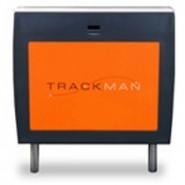Is your loft correct?
Upgrade the Performance of Your Irons: A Look at Loft
By Jeff Jackson, as submitted to “Natural Golf”
Loft is the primary factor in how high or low a golf shot flies. The more loft a club has, the higher the resulting shot. Wedges have the highest loft in a set of irons, the #3 iron has the least. Each club in the set has a loft designed to hit the ball a certain trajectory and distance. In nearly all cases, the longer the shot, the lower the ball trajectory and the shorter the shot, the higher the trajectory. The most important element of loft related to playability is to know how far you hit each iron in your set. It is also very important that there is a similar distance gap between every iron, adding to consistency. Let’s take a closer look at loft and how having it matched to your game leads to lower scores.
By definition, loft is the angle of the face to the shaft plane. Loft is measured in degrees. This sounds simple enough, but there is one key factor that is often overlooked when discussing loft. Different manufacturers use different lofts for the same clubs. For example, one company’s #5 iron might measure 30 degrees, but another’s may be 28 or 26. What this means is that not all #5 irons (or any other irons in different sets) are created equal. The 28-degree #5 will probably fly longer and lower than the 30-degree model. The 26-degree #5 iron will likely go lower and longer yet. It would seem to make sense to find a set with the lowest lofts since these will hit the ball longer, right? Not so fast. If all of the clubs in the set were lower lofted, when it came time to use your wedges, you would now hit them correspondingly longer as well. Keep in mind that over 70% of your shots come within 100 yards of the green and you can see how important distance control on wedges becomes. It might sound great to hit your wedge 150 yards, but what if you have to hit that same wedge 60 or 75 yards? It’s not so easy to control now is it? One of the reasons many players carry 3 wedges is that the lofts of the irons are lower than they used to be, making shorter shots a very real challenge without additional wedges.
Now that you know a little about how loft works, how can the loft of your irons be best matched to your swing? You need to have your irons “gapped” to provide distance consistency from club to club. This distance gap may vary from player to player. To determine how far you hit each of your clubs, find a fitting specialist who has a DistanceCaddy that will measure how far you hit each iron in your set. The DistanceCaddy uses Doppler Radar to measure the distance each club is hit. A properly gapped set of irons will have consistent distances between each club. You may be surprised to learn that there may be more than one club in your set that you hit approximately the same distance. By having the loft of one (or both) of the clubs changed, consistency will be improved. It is important to not get “hung up” on whether the loft of your #5 iron is 28 or 30 degrees; what is important is that there is the same distance gap between your #4 & #5 and #5 & # 6 irons, as well as between the other irons in your set.
Now that you know some changes have to be made, what’s next? Find a fitting specialist who uses a Steelclub Angle Machine to adjust the lofts. This machine accurately registers the club and allows its hosel to be precisely bent to the proper loft. Each club’s loft should be set based on the Distance Caddy results to ensure consistency from club to club. The “gapped” irons will now provide the same distance differential from one club to the next, eliminating any variables as a result of your equipment.
Loft is a key element related to ball flight and distance control. Having the lofts of your irons set to match your swing is a wise move toward upgrading the performance of your clubs. Consistent distance control from club to club is a must for lower scores. Gapping your irons virtually assures that this will happen. Looking for more consistency? Look at the loft or your irons and look for lower scores as a result.




